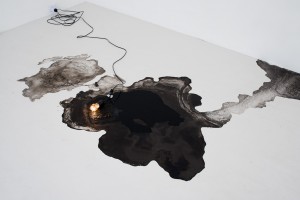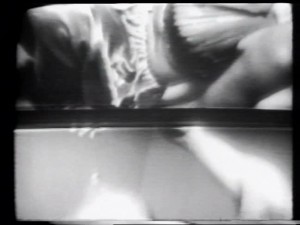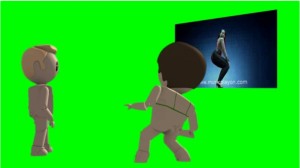Two good shows. Frances Stark’s My best thing and Everyday rebellions, the latter curated by Emily Cormack, are both like Kunstvereine exhibitions—spare and intelligent. Kitty Kraus in Cormack’s exhibition is very cool. A new pale white flooring. A heat bomb slowly unloading. The power left on. Degradation, gloom, linearity—the movement in the work is atomic or sub-atomic. The arrow of time moves in only one direction. Material resistance (‘rebellion’, writes Cormack) is a default setting.
Throwing salt onto metal, Virginia Overell speeds things up just for a little while, turning up the ‘more entropy/greater order’ dial so to speak. In the second room, Dane Mitchell waits for nonsense between systems. Substituting ‘the smell of an empty room’ for fixing chemicals, Mitchell alters our perception of the documentary mechanism of photographic paper from image to three-dimensional solid.
Frances Stark’s My best thing, 2011, at the Potter is close to Joan Jonas’s video Vertical roll, 1972, at Gertrude. During her chat-dialogue with an anonymous undies-wearing Italian, Stark interrupts to explain an art point, saying ‘… you have to do more that just use the tools’. It’s a cliché, she knows, especially when spoken out loud—too much the professor—but Stark for that moment is unsettled by her young cam-sex friend.
Joan Jonas’s 1972 classic manipulates not so much video but television technology. She makes the TV format her own, in much the same way that Stark uses online chat platforms. Jonas takes the tension found in a buggered TV’s rolling black bars, and visually imprisons the women pictured on the screen. Both Jonas and Stark use the energy of language expressively, but not as proof.
Malfunctioning screens like a Jonas-day TV are gone now anyway. Finished.
Everyday rebellions, Gertrude Contemporary, Melbourne, 11 May – 8 June 2013.
Francis Stark: My best thing, the Ian Potter Museum of Art, the University of Melbourne, 20 March – 2 June 2013.




